The state of Mississippi comprises various landscapes, including grasslands, marshes, islands along the state line, and cliffs along the beach. The state is also home to the famous Mississippi River, one of America’s most important rivers.
Moving birds, critters, and unique fish find food and shelter in the Mississippi river, floodplains, and bluffs. Along the river’s banks are beavers, otters, deer, coyotes, muskrats, and other highly developed animals. And where there is water, of course, there are also frogs. So, what are the types of frogs present on the Mississippi River? Find out below!
1. Cope’s Gray Treefrog
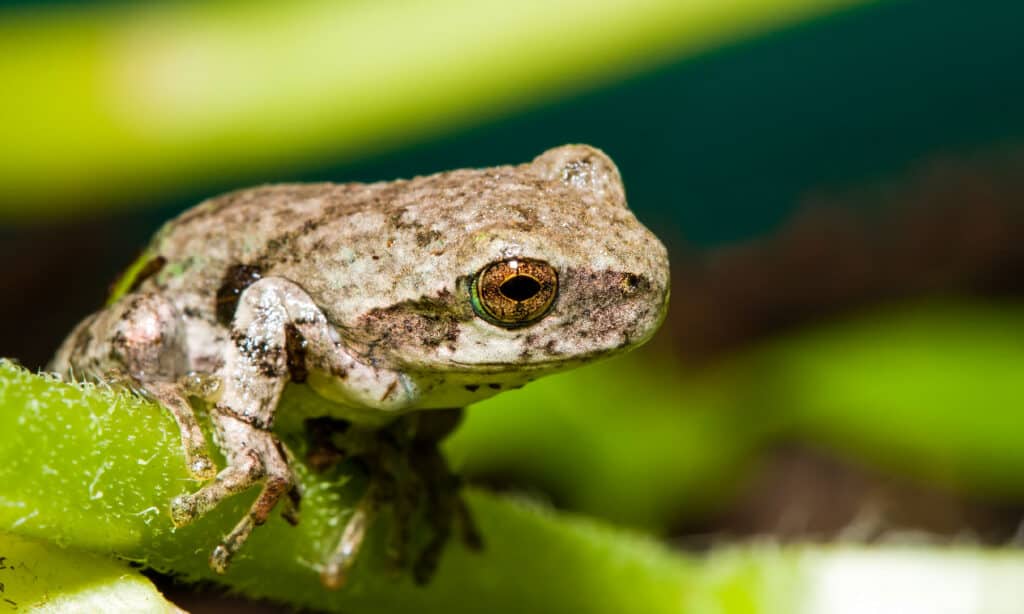
Although the southeast is where it is most prevalent, the Cope’s gray treefrog can be found as far north as Minnesota,
©iStock.com/Coffee999
A species of treefrog in the United States, the Cope’s gray treefrog shares a large portion of the gray treefrog’s geographic range and is essentially identical. These treefrogs can be distinguished from other treefrogs by the vivid orange to yellow spots on their black-marked hind legs. Originally concealed, the bright-yellow pattern is shown as the frog leaps. This “flash pattern” probably serves to frighten predators. This species can be found as far north as Minnesota, though the southeast is where it is most prevalent.
2. Gray Treefrog

Gray tree frogs can be found all over Mississippi, particularly in woody environments.
©Ryan M. Bolton/Shutterstock.com
Did you know that there are animals besides chameleons that change their color? And the gray treefrog is one such animal. This amazing frog can cautiously change its color to blend in with the surface it is sitting on. Because they are not always gray, these frogs are very hard to spot. Depending on their current habitat and activities, they might vary in hue from gray to green or brown. They frequently change their color to blend in with tree bark.
Gray tree frogs can be found all over Mississippi, particularly in woody environments, such as backyards, woodlands, and swamps.
3. Northern Spring Peeper

The northern spring peeper is present throughout the whole region east of the Mississippi River and into eastern and central Canada.
©Jay Ondreicka/Shutterstock.com
The eastern United States and Canada are home to the little chorus frog known as the spring peeper. They got their name from the chirping sound they make at the first signs of spring. Although the species prefers to live among the loose forest floor debris, it has robust toe pads for climbing.
The habitat of the southern spring peeper in the United States spans the Gulf Coast from southeast Texas to southeast Georgia and northern Florida. Its northern counterpart, the northern spring peeper, is present throughout the whole region east of the Mississippi River and into eastern and central Canada.
Spring peepers are frequently found in temporary ponds, intermediate ponds that alternate between dry and wet seasons yearly, or in typically filled year-round ponds.
4. Boreal Chorus Frog
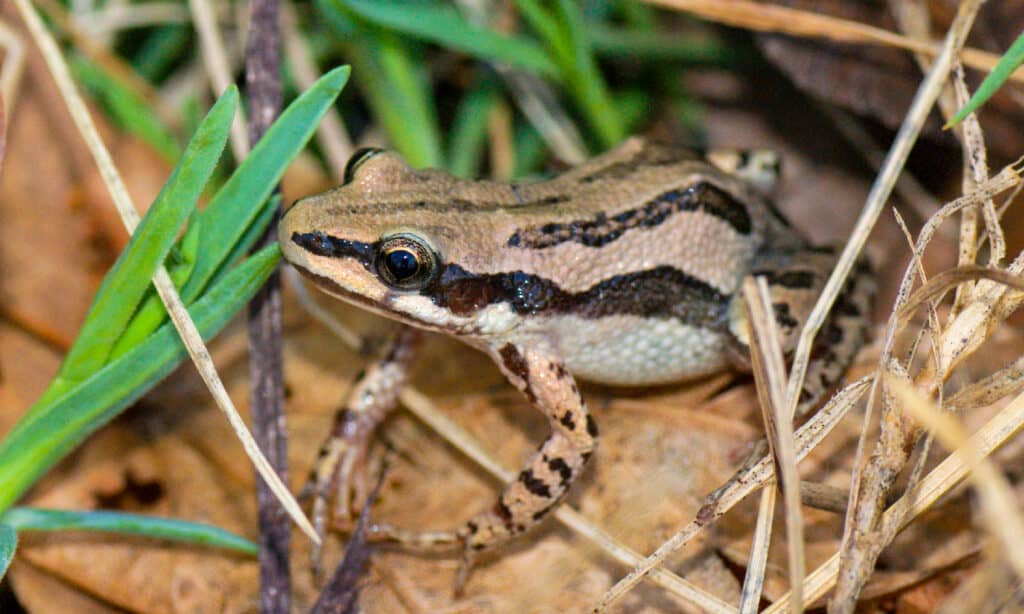
The boreal chorus frog typically has three broken dorsal stripes.
©Matt Jeppson/Shutterstock.com
The boreal chorus frog is found in the US in parts of western Wisconsin, Montana, northeastern Arizona, northern New Mexico, and southwestern Utah. This species of frog typically has three broken dorsal stripes that range in intensity from quite faint to very pronounced. Thanks to its somewhat expanded toe pads, it can climb short grasses and vegetation. It has also been discovered that this frog species has cultural knowledge about how to act around predators.
5. Western Chorus Frog

The western chorus frog is found in Canada and the United States.
©Mike Wilhelm/Shutterstock.com
Commonly known as the striped chorus frog, the western chorus frog is found in Canada and the United States. Western chorus frogs inhabit a variety of habitats. However, places with more persistent water present a greater danger to their eggs or tadpoles due to predation. Chorus frogs make up for this by remaining primarily in temporary freshwater environments like marshes, river swamps, grassy pools, meadows, and other open places found in mountains and plains.
6. American Bullfrog
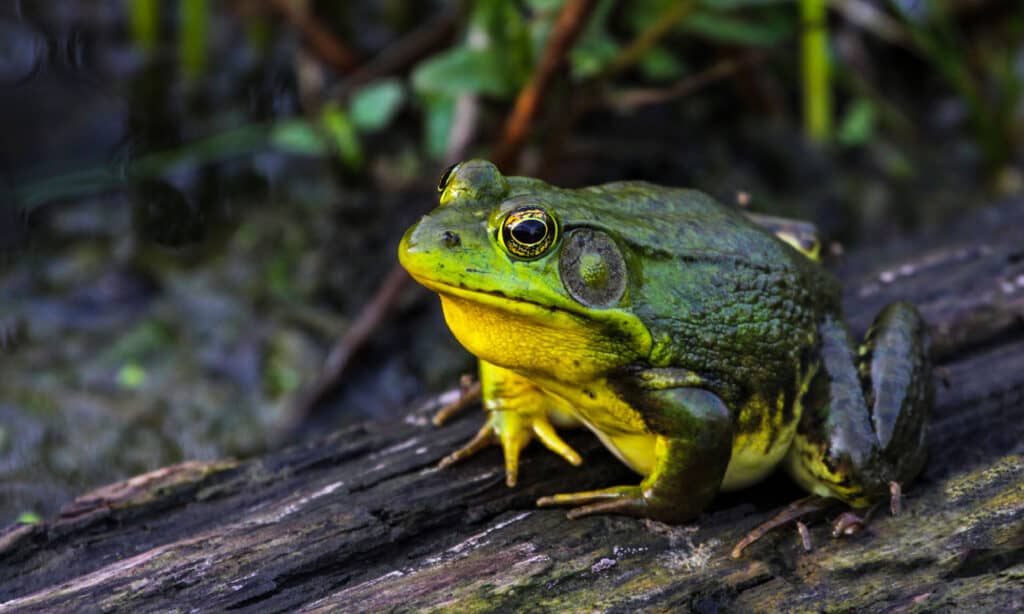
Bullfrogs can be found in culverts, ditches, pools, and canals.
©iStock.com/187715314
The American bullfrog is a sizable true frog native to eastern North America, and is commonly referred to simply as the bullfrog in Canada and the United States. Bullfrogs can be found in various hues, from green to olive-brown. They frequently have a white to yellow belly, but their legs are typically dark. They got their name from their booming sounds, which might resemble a bullhorn. A bullfrog’s circular eardrums can be found on either side of the head, so if you’re unsure you’re looking at one, look at the ears.
Large permanent water areas like swamps, ponds, and lakes are where it usually lives. Bullfrogs can also be found in habitats created by humans, such as culverts, ditches, pools, and canals.
7. Northern Green Frog
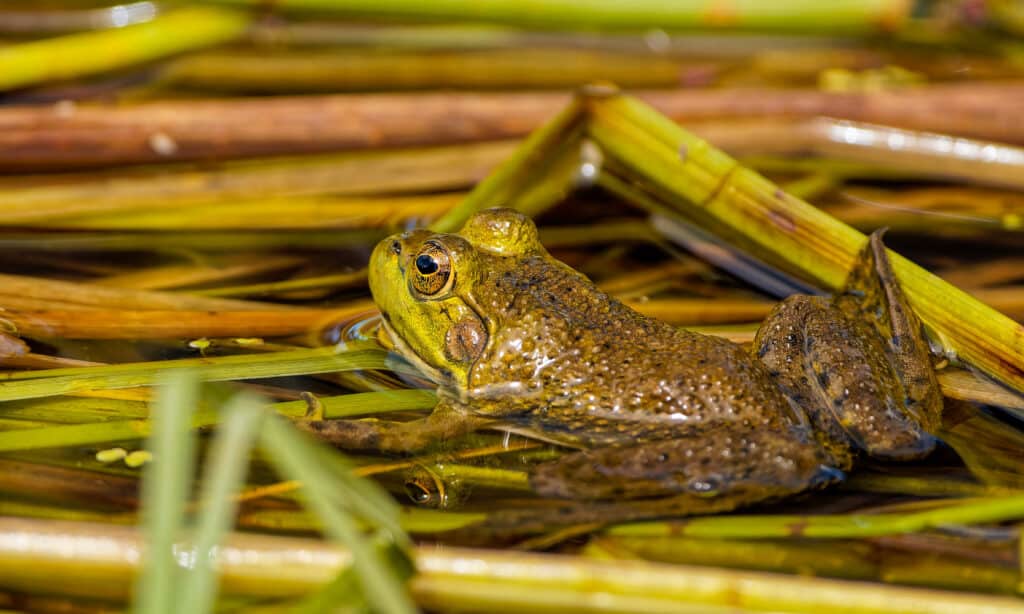
Green frogs are well known for their striking green hue.
©Wirestock Creators/Shutterstock.com
Northeastern North America is home to the northern green frog, a subspecies of the green frog. Green frogs are well known for their striking green hue. They are typically light in color, but occasionally they can look muddy and bullfrog-like.
These frogs are among the toughest species and can live almost anywhere they can access a stable body of water. The most frequent locations where they can be found include lakes, ponds, and even small bogs.
8. Northern Leopard Frog
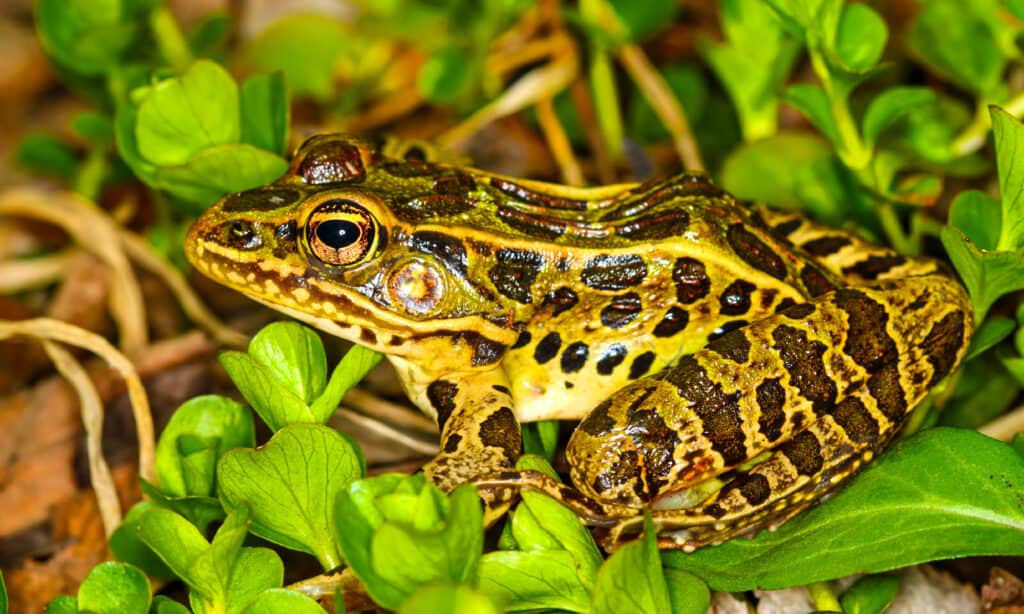
The northern
leopard
frog can grow to a length of 4.3 inches from snout to vent.
©Jason Patrick Ross/Shutterstock.com
Parts of Canada and the United States are home to the northern leopard frog, a species of the true frog family, and the official amphibian of Vermont and Minnesota. A fairly large frog species, the northern leopard frog can grow to a length of 4.3 inches from snout to vent. The most prevalent two of the northern leopard frog’s many color morphs are its green and brown morphs.
There are several habitats for northern leopard frogs, and they can be found in ponds, marshes, permanent swamps, and slow-moving streams in both forest and urban regions.
9. Wood Frog
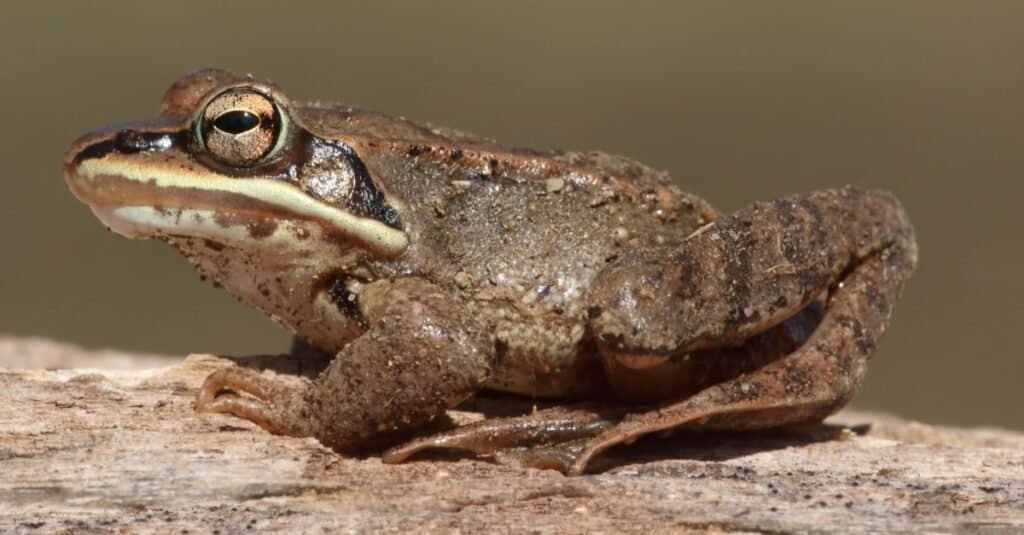
The wood frog lives farther north than any other North American amphibian.
©Steve Byland/Shutterstock.com
Due to its terrestrial habitat associations, ability to withstand freezing temperatures, and long-distance migrations, the wood frog has drawn more scientific attention in the past century. It is widely distributed across North America, from the northern boreal forest to the southern Appalachians. Its most distinctive features are its black “robber’s mask” on its face and yellow-to-greenish-white belly with a stripe on its upper lip. Wood frogs mix well with their surroundings due to their hue, especially in the woodland.
Up Next:
Are There Sharks in the Mississippi River?
Colorful Frogs: The 12 Prettiest Frogs in the World
The photo featured at the top of this post is © Steve Byland/Shutterstock.com
Sources
- National Park Service, Available here: https://irma.nps.gov/NPSpecies/Reports/SpeciesList/Species%20Checklist/MISS/5,2,3,1,4,11/true
Thank you for reading! Have some feedback for us? Contact the AZ Animals editorial team.






